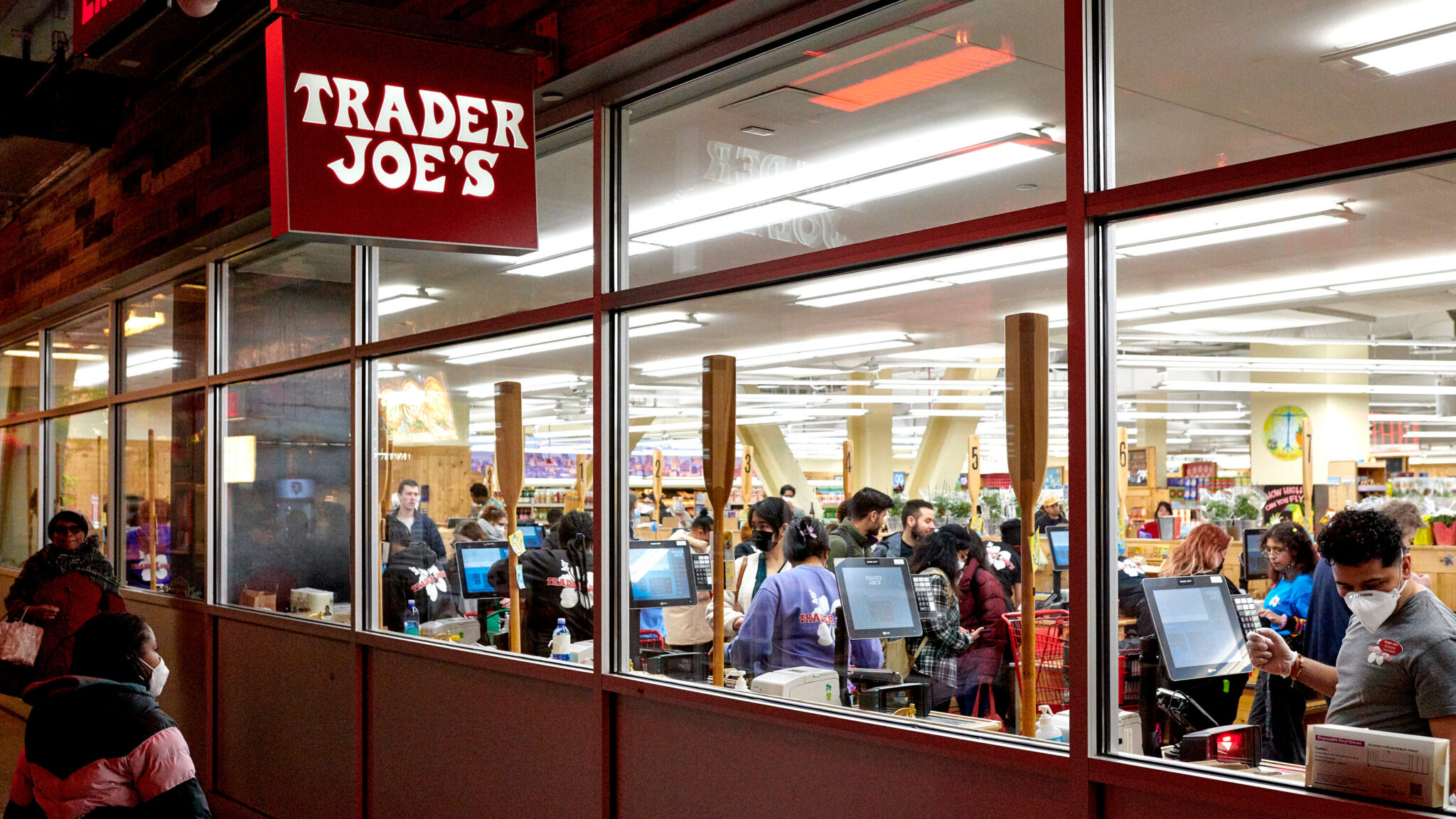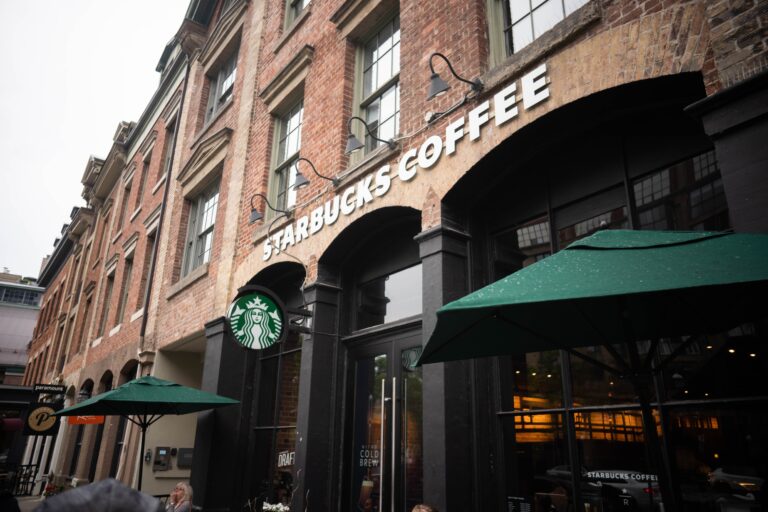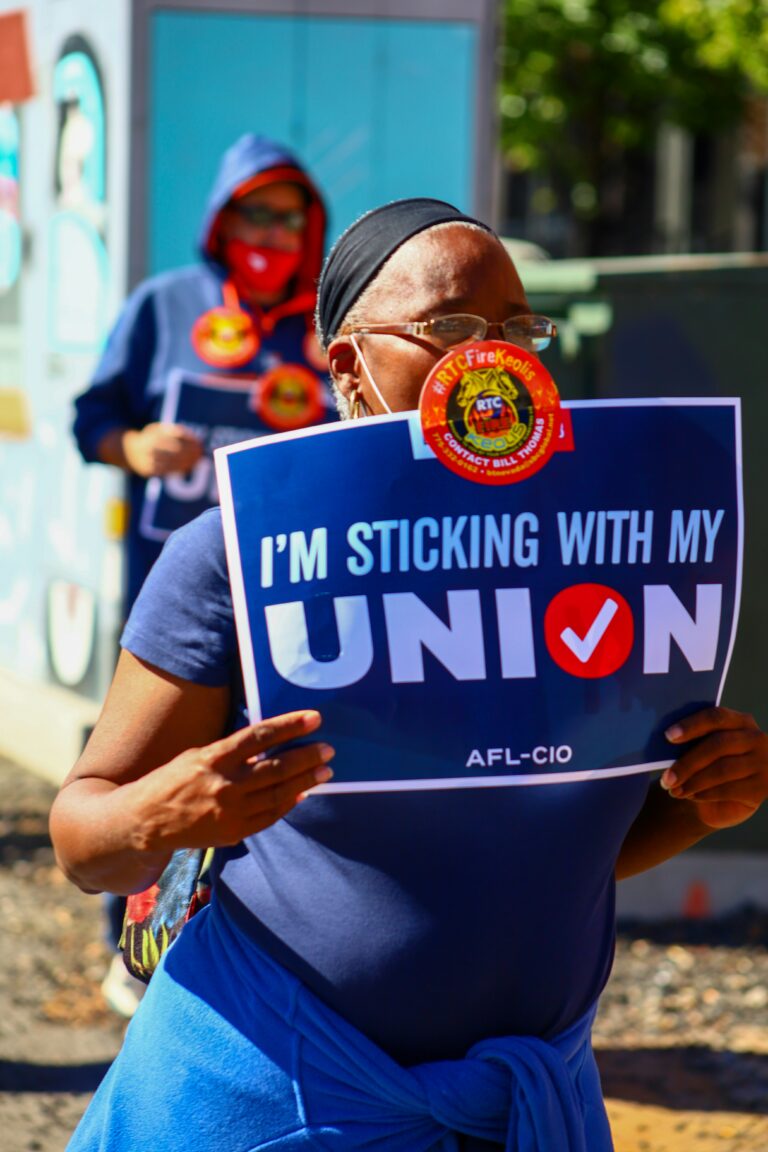
Andrew Strom is a union lawyer based in New York City. He is also an adjunct professor at Brooklyn Law School.
When workers at Trader Joe’s formed a union, they called themselves Trader Joe’s United (“TJU”), and they adopted a logo of a raised fist holding a box cutter. The fledgling union began selling merchandise on its website featuring the union’s logo. One item the union sold was a tote bag. Trader Joe’s sued the union, claiming a violation of trademark law. The corporation’s theory was that potential customers might stumble upon the TJU website, and inadvertently purchase a tote bag with the raised fist logo thinking that they were actually buying a corporate tote bag. The district court judge practically laughed Trader Joe’s out of court, but inexplicably, a Ninth Circuit panel found that, at a minimum, the union must suffer through an expensive round of discovery before it can get the case thrown out.
Trademark law serves a valid purpose. As the Supreme Court has explained, a trademark tells the public who is responsible for a product, and it “quickly and easily assures a potential customer that this item — the item with this mark — is made by the same producer as other similarly marked items that he or she liked (or disliked) in the past.” In other words, you want to know, before you make the purchase, whether the cola drink you are buying is actually Coca-Cola.
To prevail in a trademark infringement lawsuit, the mark holder must establish that the defendant’s use is “likely to cause confusion, or to cause mistake, or to deceive.” Here, Trader Joe’s had to show that individuals who went to the union’s website — the only place you could purchase the union tote bag — were likely to be confused about whether they were buying a union tote bag or a corporate tote bag. The district court pointed out that the union’s website contains a “.org” extension, which is one clue that it is not the supermarket chain’s website, and the union’s website is also openly critical of Trader Joe’s labor policies, not something you would expect to see on the company’s own website.
And then there is the image of the raised fist holding a box cutter. The district court accurately described the raised fist as “widely recognized as a symbol of labor, social, and political movements.” Yet, somehow the Ninth Circuit panel thought that the public might view a raised fist holding a box cutter as just another symbol of Corporate America. Based on nothing but its own intuition, the court concluded that “how a reasonable consumer might interpret the image of a raised fist holding a boxcutter is a question of fact that cannot be resolved at the pleading stage.” This means that to prevail in this lawsuit, the union likely has to commission an expensive survey of potential Trader Joe’s customers to ask them whether they think the raised fist holding a box cutter looks like a corporate logo.
To rule for Trader Joe’s, the Ninth Circuit panel marched through an eight factor test. The court found that three factors favored Trader Joe’s — the strength of its mark, the relatedness of the goods, and the similarity of the marks. The court found that TJU’s mark was “strikingly similar” to Trader Joe’s mark because both used red capital letters within concentric circles. But TJU used a noticeably different font, and most importantly, Trader Joe’s has a fruit basket rather than a raised fist holding a box cutter inside its concentric circles. The district court described the similarity of the two designs as “negligible.” Sure, the TJU logo nods to the Trader Joe’s logo — it’s not a coincidence that TJU used a circle rather than a square, or that it used red capital letters. Those elements are just enough to signal that “Trader Joe’s United” refers to workers at the supermarket chain. But, no one would confuse the two logos.
The remaining five factors are: evidence of actual confusion; marketing channels used; type of goods and the degree of care likely to be exercised by the purchaser; the defendant’s intent in selecting the mark; and likelihood of expansion of the product lines. The Ninth Circuit held that each of these factors was neutral. Trader Joe’s did not allege actual confusion. As for marketing channels, the district court found this weighed in the union’s favor because Trader Joe’s only sells its products in stores, while TJU sold the tote bags on its website. Regarding the degree of care likely to be exercised by the purchaser, courts have found that the less expensive the goods, the less likely a buyer is to exercise care in purchasing the products. Here, TJU was selling the tote bags for $32. The district court concluded that a reasonable consumer exercising ordinary care would not be confused. Between the .org extension, the content critical of Trader Joe’s labor practices, and the “About Us” page, the district court found it was not plausible that consumers buying a TJU tote bag would mistakenly believe they were buying from Trader Joe’s. But, the Ninth Circuit apparently wants the union to introduce evidence that people who bought the tote bags read the “About Us” page before making their purchase.
The district court appropriately viewed Trader Joe’s lawsuit as another weapon in its fight against the union. According to a brief filed by a group of trademark law professors in a recent Supreme Court case, even the most basic consumer survey in a trademark lawsuit costs hundreds of thousands of dollars. If the union had deeper pockets, it could just give away the tote bags, but it’s easy to see why the tote bags are an effective tool for the union. By using the union tote bags, Trader Joe’s customers can show both workers and management that they support the workers’ unionization efforts. And supporters can re-use their bag every time they go to the store. Maybe Trader Joe’s genuinely thinks its customers are clueless, but it’s hard for me to believe that Trader Joe’s is actually worried that the bags are likely to cause confusion, mistake, or deception. Instead, this seems like just another heavy-handed anti-union tactic. It’s too bad that the Ninth Circuit gave it the green light.








Daily News & Commentary
Start your day with our roundup of the latest labor developments. See all
October 24
Amazon Labor Union intervenes in NYS PERB lawsuit; a union engages in shareholder activism; and Meta lays off hundreds of risk auditing workers.
October 23
Ninth Circuit reaffirms Thryv remedies; unions oppose Elon Musk pay package; more federal workers protected from shutdown-related layoffs.
October 22
Broadway actors and producers reach a tentative labor agreement; workers at four major concert venues in Washington D.C. launch efforts to unionize; and Walmart pauses offers to job candidates requiring H-1B visas.
October 21
Some workers are exempt from Trump’s new $100,000 H1-B visa fee; Amazon driver alleges the EEOC violated mandate by dropping a disparate-impact investigation; Eighth Circuit revived bank employee’s First Amendment retaliation claims over school mask-mandate.
October 20
Supreme Court won't review SpaceX decision, courts uphold worker-friendly interpretation of EFAA, EEOC focuses on opioid-related discrimination.
October 19
DOL issues a new wage rule for H-2A workers, Gov. Newsom vetoes a bill that regulates employers’ use of AI, and Broadway workers and management reach a tentative deal